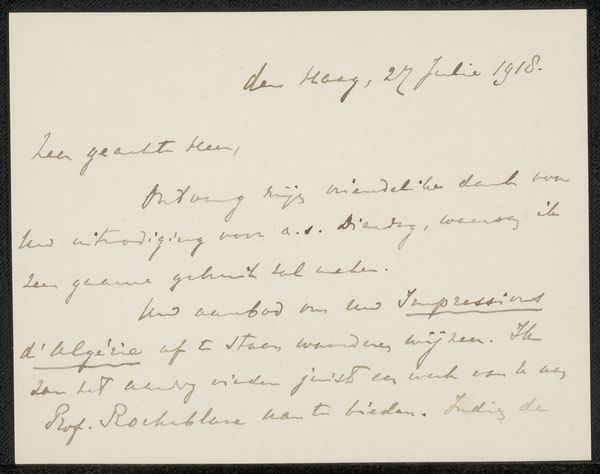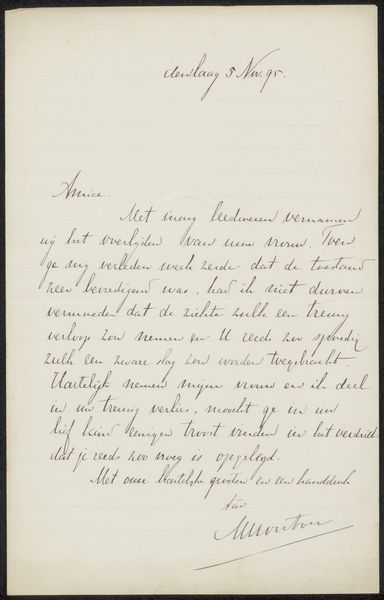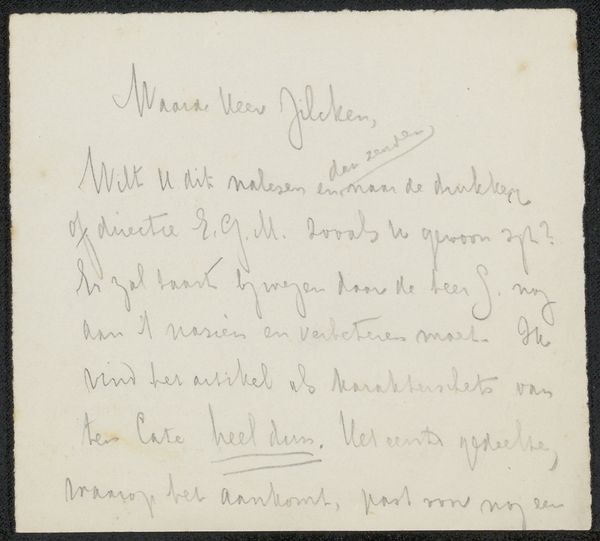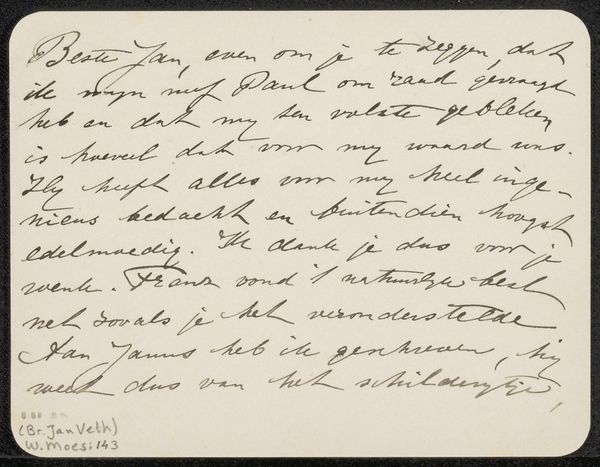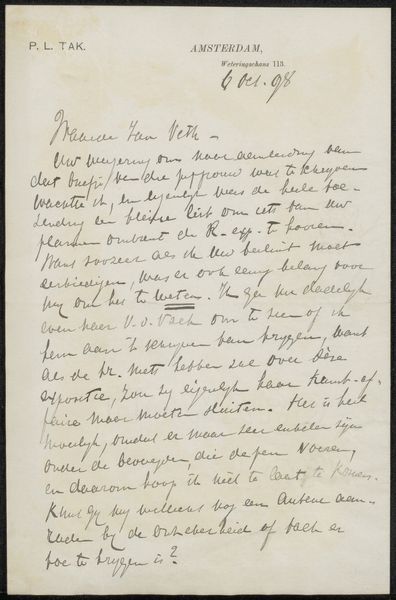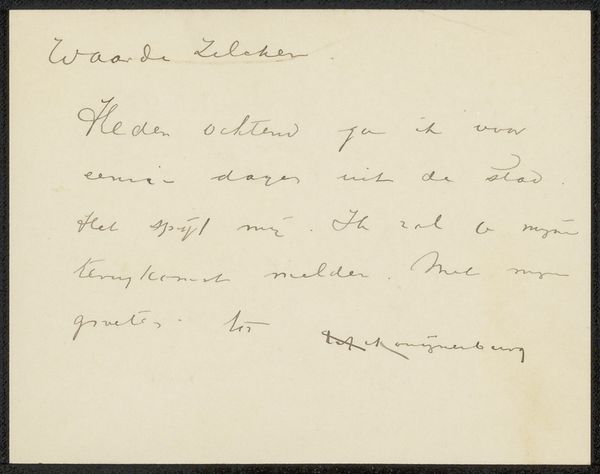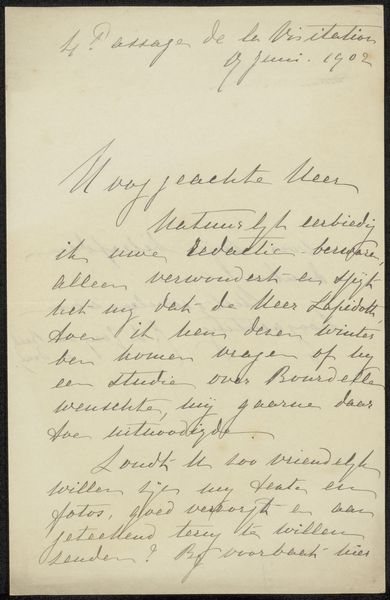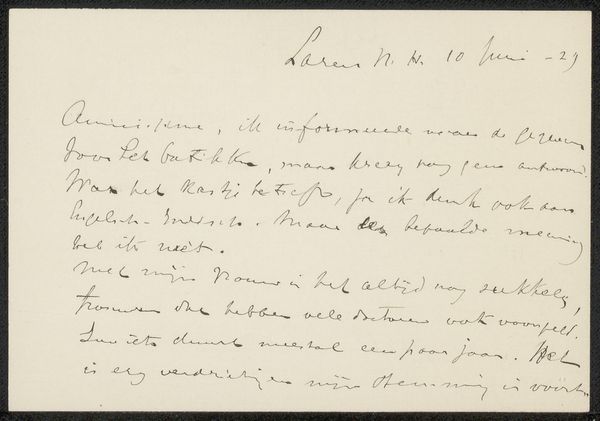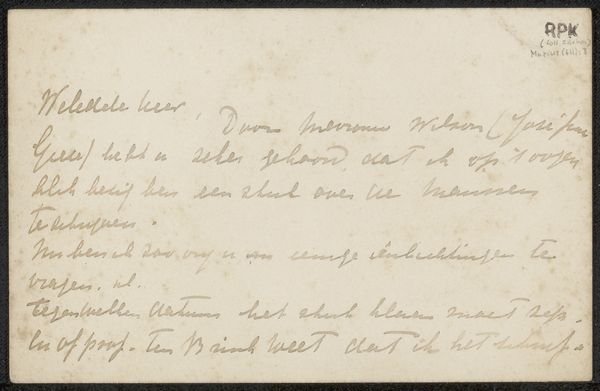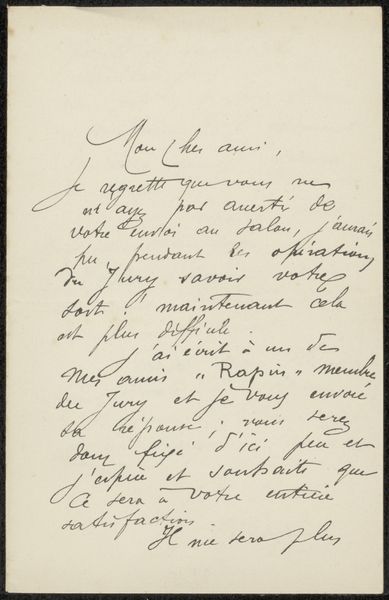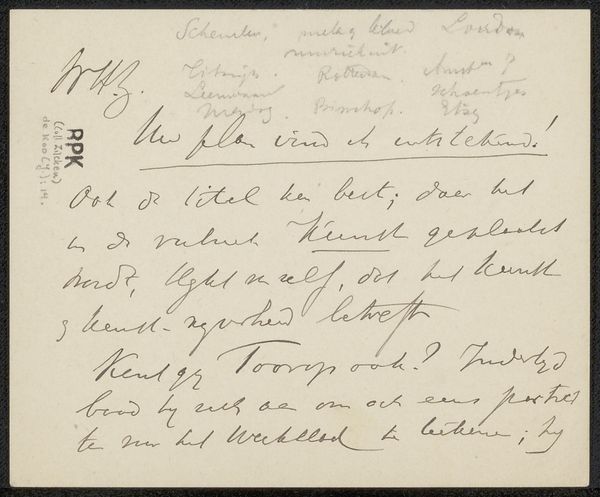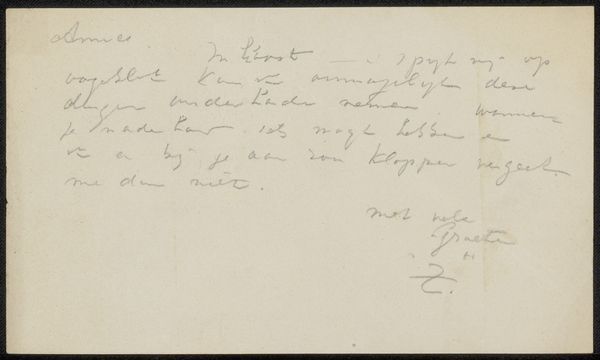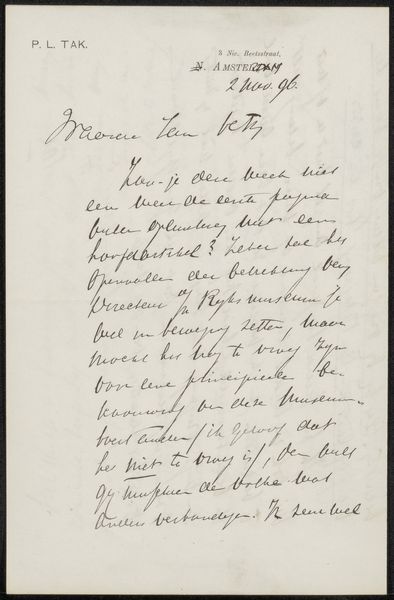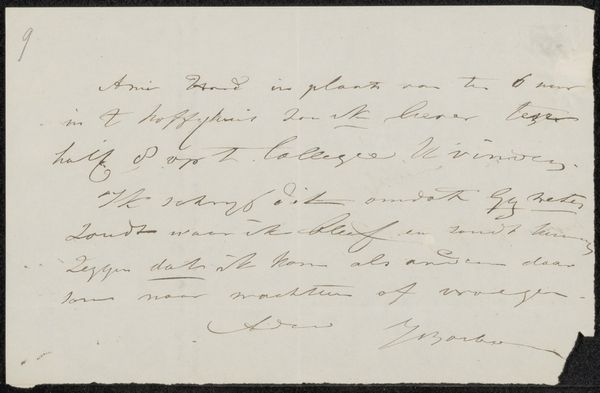
drawing, paper, ink
#
portrait
#
drawing
#
paper
#
ink
Copyright: Rijks Museum: Open Domain
Curator: The piece before us is entitled "Brief aan Jan Veth," attributed to Karel Johan Lodewijk Alberdingk Thijm, and potentially created around 1904. It's an ink drawing on paper, resembling a handwritten letter. Editor: My initial impression is that it’s more document than artwork. The ink has a kind of faded authority. It feels incredibly intimate, a fleeting glimpse into someone's private world, which paradoxically connects to much wider considerations about written language and shared cultural moments. Curator: The inscription suggests an interpersonal connection between the author, Alberdingk Thijm, and the recipient, Jan Veth, but its meaning remains hidden and subjective to us, who came much later after its creation. However, we can speculate that its presence as a record offers insights into cultural patterns. Editor: Absolutely. The language itself and its formality provide glimpses into early 20th-century societal structures and interpersonal dynamics, offering an intriguing window into how relationships were negotiated and articulated within specific social contexts of that time. The handwriting and the paper stock are visual signifiers, carriers of cultural information related to gender roles, social status, education and the availability of personal correspondence within those communities. Curator: The spidery quality of the handwriting contrasts with the implied formality, perhaps hinting at the emotional undercurrents within this relationship. Think of the image as the author’s imprint, their spirit caught and preserved across a distance, forever linking writer to receiver through its simple, graphic traces on a material thing. Editor: I find myself wanting to understand what isn’t stated—the unacknowledged cultural baggage carried between two people represented solely by handwritten shapes and inky traces upon an unbleached rectangle of paper, that survives still, despite the social or artistic import of the original message. Curator: Yes. By slowing down, by studying seemingly unimportant cultural fragments, we reveal the invisible psychological structures of our cultural history, of identity and difference. Editor: Precisely, an important work of art! And, for me, the appeal stems from how this ordinary, incidental artifact now performs new modes of political engagement and becomes a means of investigating history.
Comments
No comments
Be the first to comment and join the conversation on the ultimate creative platform.
